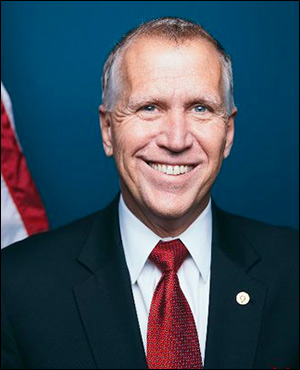By Jim Ellis
 Nov. 16, 2020 — With the presidential race still in the courts, the Nov.3 unofficial results yield the mirror image of the 2016 contest. In the previous election, Donald Trump defeated Hillary Clinton with a 306-232 electoral vote margin. In the current election, the margin between President Trump and former vice president Joe Biden is exactly the same, but this time it looks like the result is yielding a Democratic victory.
Nov. 16, 2020 — With the presidential race still in the courts, the Nov.3 unofficial results yield the mirror image of the 2016 contest. In the previous election, Donald Trump defeated Hillary Clinton with a 306-232 electoral vote margin. In the current election, the margin between President Trump and former vice president Joe Biden is exactly the same, but this time it looks like the result is yielding a Democratic victory.
Four years ago, President Trump carried his final three states by a cumulative 77,000 votes. In this election, approximately 44,000-plus votes switching in Arizona, Georgia, and Wisconsin would have re-elected the incumbent president.
The Senate contests are complete — until the Georgia runoffs occur on Jan. 5 and the outcomes of the Sen. David Perdue v. Jon Ossoff and Sen. Kelly Loeffler v. Raphael Warnock campaigns will determine the Senate majority.
A Democratic sweep would catapult them into a 50-50 tie and allow the incoming vice president, Kamala Harris, to send the Democrats into the majority. This assumes she resigns her California Senate seat in a timely fashion thus allowing Gov. Gavin Newsom (D) to name a replacement and see the individual sworn into the office. Republicans would retain the Senate majority with a victory in just one of the two Georgia runoff campaigns.
Several House seats were called or conceded over the weekend. California challenger Young Kim (R) who lost by just under 8,000 votes two years ago, rebounded to unseat freshman incumbent Gil Cisneros (D-Yorba Linda). Former NFL Super Bowl champion defensive back Burgess Owens (R) looks to have defeated Utah freshman Rep. Ben McAdams (D-Salt Lake City) by 2,095 votes in a race that has unofficially drawn 372,369 voters, a turnout increase of 26.3 percent from the previous presidential election. This race is scheduled to be certified tomorrow.
Additional calls were made in New York where Reps. Lee Zeldin (R-Shirley), Tom Suozzi (D-Glen Cove), Sean Patrick Maloney (D-Cold Spring), Antonio Delgado (D-Rhinebeck), and John Katko (R-Syracuse) have all been projected as re-election winners though votes remain to be counted. The same for Republican Andrew Garbarino who holds retiring GOP Rep. Peter King’s seat on Long Island.
In Louisiana, state Rep. Lance Harris (R-Alexandria) has qualified for the Dec. 5 runoff election in the state’s open northeast 5th Congressional District, holding off Democrat Candy Christophe by just 428 votes. Harris will oppose former congressional aide Luke Letlow in a double Republican contest.






